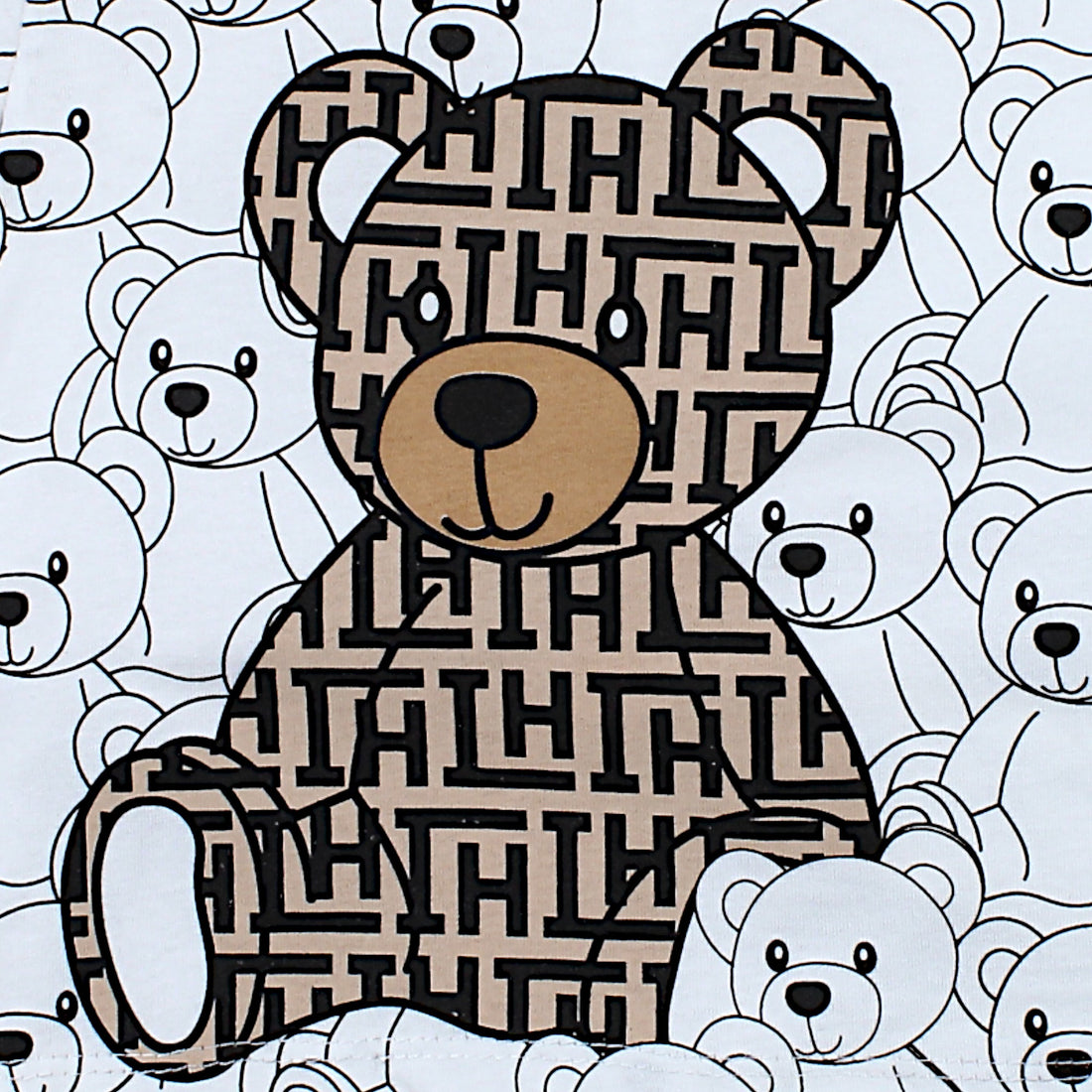Hypoallergenic baby clothes are becoming increasingly popular among parents who want to provide their little ones with maximum comfort and protection against allergies. Children, especially infants, have delicate skin that is more susceptible to irritation and allergic reactions. In this article, you will learn what hypoallergenic baby clothes are, what materials are best, what their advantages are, and how to choose the right clothes for your child.
What are Hypoallergenic Children's Clothes?
Hypoallergenic children's clothing is clothing made from materials that minimize the risk of allergic reactions in children. They are carefully designed and manufactured to be gentle on the skin, breathable, and free from harmful chemicals. The purpose of such clothing is to provide comfort and safety, especially for children with sensitive skin or a tendency to allergies.
Why Are Hypoallergenic Baby Clothes Important?
1. Allergy Protection
Children are more susceptible to skin allergies, which can be caused by synthetic materials, dyes, or chemicals used in traditional clothing. Hypoallergenic clothing minimizes this risk by protecting the delicate skin of a child from irritation.
2. Comfort and Convenience
Hypoallergenic materials are usually soft, breathable, and skin-friendly, which provides comfort to your child all day long. Children who wear such clothes feel better, which affects their overall well-being and mood.
3. Skin Health Support
Regularly wearing hypoallergenic clothing can help maintain a healthy skin barrier for your baby, preventing dryness and other dermatological issues.
The Best Materials for Hypoallergenic Baby Clothes
1. Organic Cotton
Organic cotton is one of the most popular materials used to produce hypoallergenic children's clothing. It is soft, breathable, natural and free from pesticides and other chemicals.
2. Bamboo
Bamboo is another great choice for hypoallergenic clothing. It is naturally antibacterial, hypoallergenic, and very soft and breathable. Bamboo materials are also durable and eco-friendly.
3. Lyocell (Tencel)
Lyocell, also known as Tencel, is a material made from wood cellulose. It is soft, breathable and biodegradable, making it an ideal choice for hypoallergenic children's clothing.
4. Hypoallergenic Material Blends
Some clothes are made from blends of cotton with elastane or other natural fibers, which provides elasticity and a better fit to the child's body while minimizing the risk of allergies.
How to Choose the Right Hypoallergenic Baby Clothes?
1. Check the Labels
Always read product labels to make sure the clothes are truly hypoallergenic. Look for labels like "organic," "hypoallergenic," or "free from harmful chemicals."
2. Choose Natural Materials
Prefer clothes made from natural, breathable materials such as organic cotton, bamboo or lyocell, which are less likely to cause allergic reactions.
3. Avoid Strong Dyes and Chemicals
Choose clothes without intense dyes and chemicals. Natural colors and delicate patterns are often safer for baby's skin.
4. Test New Clothes
Before putting new clothes on your baby, test it on a small area of skin to make sure it won't cause an allergic reaction.
5. Pay Attention to the Washing Method
Hypoallergenic clothing often requires gentle washing, without the use of strong detergents or fabric softeners. Follow the manufacturer's care instructions.
Benefits of Wearing Hypoallergenic Baby Clothes
- Allergy Risk Reduction: Minimizes the risk of skin irritations and allergies.
- Improved Comfort: Babies feel more comfortable, which promotes better sleep and overall well-being.
- Healthy Skin Development: Helps maintain a healthy skin barrier, which is crucial for young children.
- Eco-friendly Solutions: Many hypoallergenic clothes are made from eco-friendly materials, which is beneficial not only for your baby but also for the environment.
The Most Common Myths About Hypoallergenic Baby Clothes
1. Hypoallergenic Clothes Are More Expensive
While some hypoallergenic clothing may be more expensive due to the materials used and the manufacturing process, there are also affordable options on the market that do not compromise on quality and safety.
2. Only Children with Allergies Should Wear Hypoallergenic Clothes
Hypoallergenic clothing is beneficial for all children, whether they have allergies or not. It provides better comfort and protection against irritation.
3. Hypoallergenic Clothes Aren't Stylish
There are many trendy hypoallergenic children's clothes available on the market that combine style with functionality. You can find a wide selection of colors, patterns and styles that will please every parent and child.
How to Care for Hypoallergenic Children's Clothes?
1. Washing
Hypoallergenic clothing should be washed according to the manufacturer's recommendations. This usually means using gentle detergents and avoiding bleach and fabric softeners.
2. Drying
Air dry or tumble dry clothes on a low setting to maintain their quality and softness.
3. Storage
Store clothes in a clean and dry place to prevent the growth of mold and bacteria.
Summary
Hypoallergenic children's clothing is a great choice for parents who want to ensure their children's comfort, safety and healthy development. By choosing the right materials, ensuring proper fit and following the care rules, you can create a friendly and safe wardrobe for your little one. Remember that every child is different, so observe their reactions to different materials and adjust the choice of clothing to their individual needs.
























